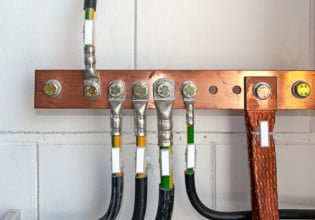DOE Announces Historic Strides in Energy Efficiency for Residential and Commercial Building Codes
Late last month, members of the International Code Council (ICC) met in Charlotte, North Carolina and voted to increase the energy efficiency levels for the 2012 International Energy Conservation Code (IECC), the energy section of the building safety and fire prevention codes that set minimum safeguards for U.S. buildings. The 30% improvement in energy savings over the 2006 IECC means that homes and businesses across the country will be built to use less energy, saving Americans potentially billions of dollars on energy bills.
The ICC is comprised of state and local energy and safety code officials, building industry representatives and relevant stakeholders, and is responsible for setting safety, efficiency and fire prevention requirements for U.S. residential and commercial construction. At the ICC final action hearing in October, members overwhelmingly passed a series of energy saving code changes, including residential and commercial proposals sponsored by the Department of Energy. The final package is anticipated to achieve DOE’s 30% goal of energy savings in both residential and commercial buildings compared to the 2006 baseline. The ICC is expected to publish the new building code in early 2011. At the time of publication most states and municipalities adopt or revise their building code regulations for new buildings and major renovations to achieve the maximum energy saving potential within their local communities. However, once the 2012 IECC publication is released, DOE will undertake a formal rulemaking determination for energy efficiency over the 2009 codes. The results will be published in the Federal Register. If the analysis shows that the revised code is more energy efficient than its predecessor, then each state is required to certify that it has reviewed its residential building energy code regarding energy efficiency and made a decision as to whether it is appropriate for that state to revise its residential building code to meet or exceed the revised code.
Key highlights of the IECC 2012 code include: increased standards in envelope efficiency; increased duct performance requirements; increased air exchange requirements (decreased infiltration); and added efficiency requirements for cooling towers and HVAC systems in commercial buildings.
Members also voted to eliminate the Energy Chapter of the International Residential Code, replacing it with the IECC. By removing confusion and contradiction within the codes, the ICC has provided a more efficient path to residential code compliance.
These monumental strides in efficiency represent a significant milestone towards the Department of Energy’s goal of achieving 50% increase in energy savings compared to the 2006 energy code baseline by 2015.






